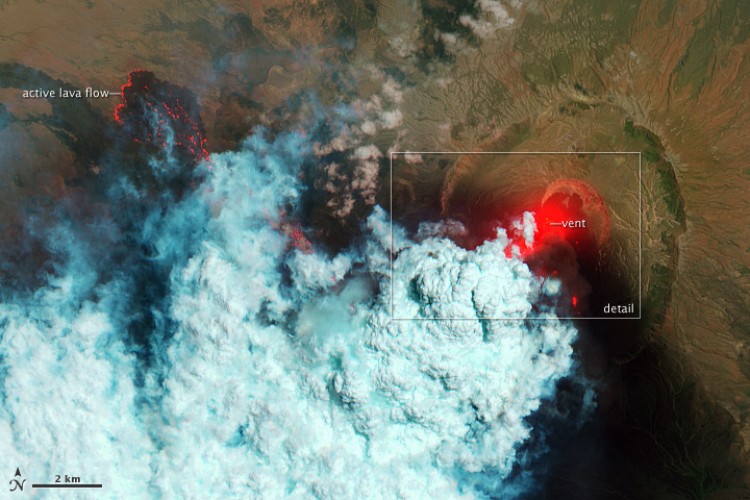The Nabro volcano in Eritrea, near the Ethiopian border, erupted on the night of June 12 for the first time in recorded history.
The stratovolcano sent clouds of ash and sulfur dioxide gas into the atmosphere, the highest levels of the gas ever detected, according to NASA.
Nabro forms part of a double caldera with the Mallahle volcano. Nabro’s caldera is horseshoe-shaped with a diameter of five miles (eight kilometers).
The eruption continues but has since diminished, killing seven people and causing some disruption to flights in North Africa and Europe.
Further images from NASA’s Earth Observatory show the volcano from space at different stages of the eruption:






